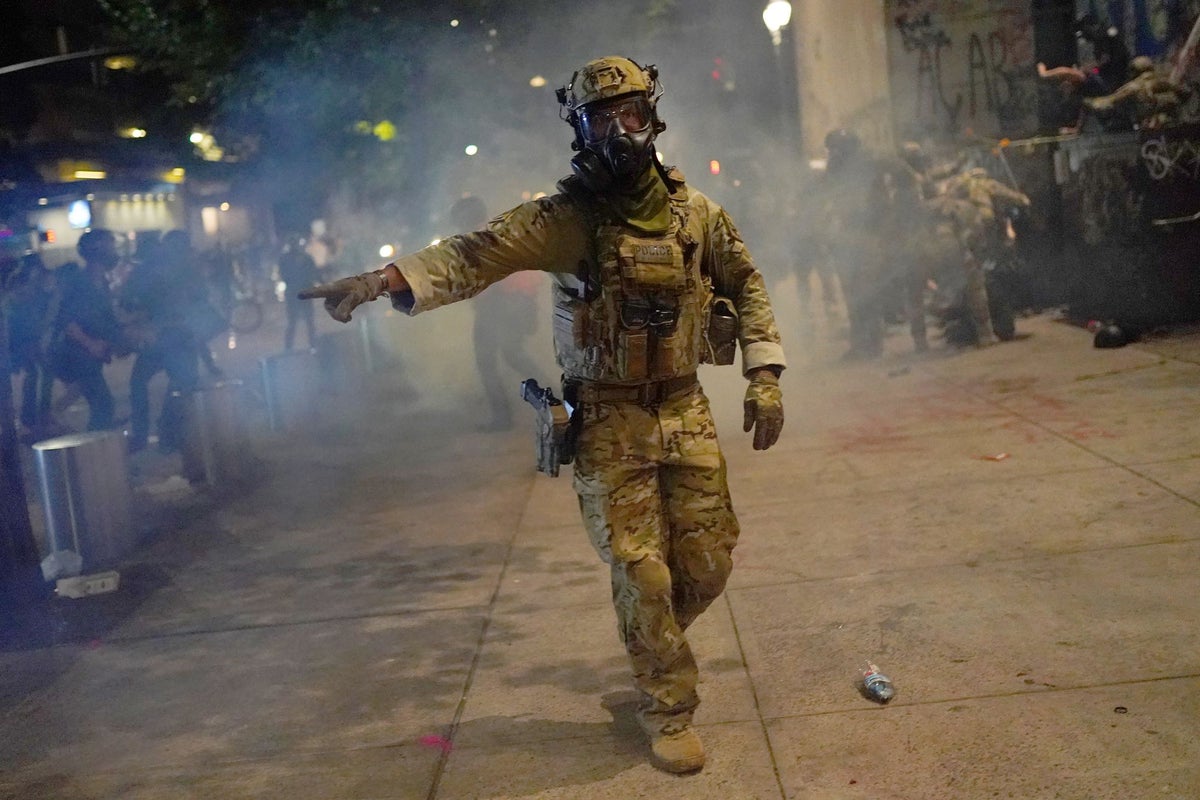
As the U.S. government shuts down for the first time since 2018, at least 750,000 federal workers have already been furloughed without pay.
Those deemed “essential,” such as members of the military, will remain on the job but won’t collect their checks until the shutdown ends – whenever that may be.
Some will be forced to dip into personal savings, take out loans, or rely on food banks during the disruption, which was triggered by a budget dispute between congressional Democrats and Republicans, with the latter presently in control of all three branches of government. At the same time, President Donald Trump is threatening mass firings across the entire federal apparatus, adding extra uncertainty to what is already a stressful time.
However, on Wednesday, the same day hundreds of thousands of federal workers were summarily sent home, U.S. Customs and Border Protection quietly announced it would be outfitting its controversial Special Operations Group with 100 pairs of advanced night-vision goggles costing $7.5 million, or $75,000 each.
The no-bid contract was awarded to L3 Harris Technologies – which is overhauling the 747-400 plane “gifted” to Trump by the royal family of Qatar, and has been tasked with constructing Trump’s so-called Golden Dome missile defense shield – according to federal procurement documents, reviewed by The Independent.
“The requirement is to provide CBP SOG with Ground Panoramic Night Vision Goggles fused with thermal capability and to improve and maximize low light and/or night operational effectiveness and situational awareness across the wide range of mission sets it is tasked with completing,” states an October 1 “Justification and Approval” document, added to a federal contracting database by CBP.
A “J&A” is necessary to steer a government contract to a single source, which can often mean a higher price.
CBP and L3 Harris did not respond Thursday to The Independent’s requests for comment.
In an email, Craig Holman, a government ethics expert with Public Citizen, a watchdog nonprofit based in Washington, D.C., called the purchase “a reckless misappropriation of funds at a critical time.”
“The government shutdown is disrupting many critical services, including air travel, food aid and scientific research,” Holman told The Independent. “To place our priorities on night vision goggles at the border when so many Americans are about to face serious hardships in their homes is nothing short of a boondoggle. Trump and congressional Republicans have got to wake up and smell the coffee and stop taking money from where it is needed just to give further financial benefits to where they are not needed.”
The J&A claims that “[o]nly the L3 Harris GPNVG-F product is capable of meeting the Government’s requirements.”
The goggles are “essential for enhancing operational effectiveness and situational awareness across CBP’s mission sets,” the J&A states. It says the devices will be used by BORTAC, essentially the Border Patrol’s SWAT team. Border Patrol is a component of CBP.
“Missions supported by USBP include homeland security, counterterrorism, drug interdiction, illegal immigration, search and rescue, direct law enforcement support to our nation’s borders, national disaster survey, worldwide response to emergencies, and communications relay,” according to the J&A.
These specific L3 Harris night-vision goggles “are essential to CBP’s need because without GPNVG-F’s that provide L3 Harris GPNVG-F’s functionalities, Border Patrol’s National Tactical Team (BORTAC)’s operational effectiveness [REDACTED] and [REDACTED] environments would be substantially negatively impacted,” the J&A goes on.
It describes the product’s “essential physical characteristics” as having, among other things, high resolution, a panoramic view, white phosphorus image intensifying tubes, a thermal fusion overlay, and an additional attribute that is redacted. If BORTAC was forced to use a different goggle, the team would “experience several operational limitations that would degrade mission effectiveness, situational awareness, and overall team safety,” according to the J&A.
BORTAC, which was established in 1984 and has since evolved into a heavily militarized domestic response group, came under intense criticism by Democratic legislators in 2020 for what they described as “violent tactics” and “indiscriminate arrests.”
They are “the most violent and racist in all [of] law enforcement,” according to Jenn Budd, a former Border Patrol officer who became disenchanted with the job and is now a pro-immigration advocate in San Diego.
CBP, of which ICE and Border Patrol are component agencies, exists under the umbrella of the Department of Homeland Security. In July, Trump’s One Big Beautiful Bill Act provided DHS with a record $170 billion in funding, giving the agencies involved in implementing the president’s mass deportation agenda a bigger budget than that of most of the world’s militaries.
Since then, DHS has not been shy about flaunting its newfound wealth, courtesy of U.S. taxpayers. In addition to offering new ICE recruits a $50,000 signing bonus, student loan repayment, and salaries of $100,000 or more for certain applicants, the agency has made recent headlines by spending lavishly on a fleet of new ICE vehicles. These have been dressed up in a red, blue, and gold paint scheme reminiscent of Trump’s private 757 plane, and have the president’s name emblazoned on the rear windows.
Like the night-vision goggles, many of the vehicle purchases were not bid competitively. According to a J&A justifying a portion of those expenditures, the expanding fleet will permit ICE to meet the “anticipated surge in staffing and enforcement requirements projected from 2026 through 2029.”
Putting the contracts out for bids “would result in unacceptable delays” and hinder ongoing recruiting efforts, the ICE J&A said.
The CBP contracting officer who oversaw the new L3 Harris night-vision procurement “has determined that the anticipated price(s) will be fair and reasonable,” according to the J&A.
“CBP will continue to monitor industry and technical advances,” it says. “When future research indicates multiple viable product options for updated requirements, the government will endeavor to engage in competitive solicitations in lieu of sole source procurements.”
